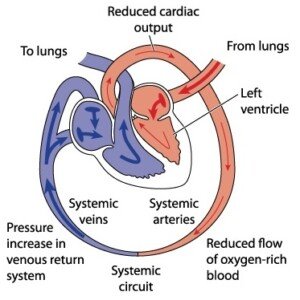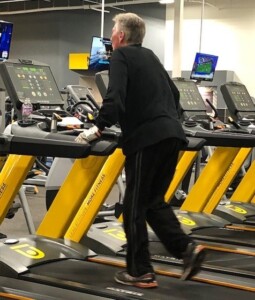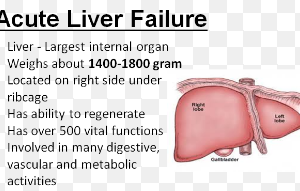
Not all exercise is the same when it comes to improving ejection fraction in heart failure patients.
There is a certain type of exercise that research has shown to improve one’s ejection fraction remarkably well, even if it’s very low. It’s called interval training.
The first report is titled “Superior Cardiovascular Effect of Aerobic Interval Training Vs. Moderate Continuous Training in Heart Failure Patients” (journal Circulation).
“Continuous training” refers to a fixed pace, or a pace-based session, such as 20 minutes of nonstop level (non-incline) walking at 2.5 mph (give or take very minor fluctuations in speed).
This nonstop speed, though slow from the viewpoint of fit people, can be quite fatiguing to many heart failure patients.
To convert 20 minutes to an interval training session, the patient might go just one minute at 3.2 mph and then three minutes at 1.8 mph, and keep alternating this way till 20 minutes are up. This second approach is superior to the first approach.
For this Norwegian study (Wisløff et al), 27 people with an ejection fraction of 29 percent were assigned to one of three groups.
The first group was continuous training (also known as “steady state”) at 70 percent of highest heart rate.
The second group did interval training (95 percent of highest heart rate).
The third group was the control. The aerobic sessions were done for 12 weeks, 3x/week.
For only the interval training group, the interval training report states: LV ejection fraction increased 35%.
The conclusion says that intensity of exercise was an “important factor” for improving aerobic capacity and reversing left ventricular (LV) remodeling.
The second study (Meyer et al) pits HIIE against MICE.
- HIIE stands for high intensity interval exercise
- MICE stands for moderate intensity continuous exercise.
This report is heavily detailed, but the conclusion states: HIIE is more effective than MICE to improve VO2peak in patients with heart failure and reduced left ventricular ejection fraction.
Studies of aerobic exercise on people with congestive heart failure (who of course, have the compromised ejection fraction) have the patients either walking or pedaling a stationary bike.

Why don’t more cardiologists push the idea of interval walking for their chronic heart failure patients?
“It’s important to know that it’s overall a very small sample size of only 27 total patients,” says Sendhil Krishnan, MD, referring to the first study.
“I think the obvious reason that this is very difficult to implement in the general population is really that time involved and commitment necessary to get patients on a scheduled aerobic interval training that is required,” explains Dr. Krishnan, a board-certified adult general cardiologist with advanced subspecialty training in interventional cardiology.
“Remember, these patients were trained at 95 percent of the target heart rate, three times a week for 12 weeks.
“That level of exercise program can only be achieved with a dedicated trainer or at a dedicated cardiac rehabilitation facility.
“Patients are also at different functional levels. Some may have limiting arthritis, back or hip or joint pain that limits their mobility, and obviously the older they get the less functional they’re going to be.
“So while in theory I certainly would recommend interval training to all my patients (regardless of having CHF), the reality may be that only a very few patients are able to maintain this degree of exercise training.”
Keep in mind that the very person who goes on to develop chronic heart failure that impairs quality of life is also the very person who – in his or her younger days – never felt a need to permanently commit to a serious exercise regimen.
It’s thus no surprise that committing to one (even if it’s non-strenuous) later in life would be an unrealistic expectation.
What about the patient who actually commits to a plan?
The treadmill is ideal because speed and time lapse can be easily observed.

Holding onto a treadmill is wrong other than for a momentary balance check. Look how it warps this man’s posture and creates a false sense of accomplishment. This is not how we walk once we’re off the treadmill. Heart failure is no excuse for holding on.
Intensity can also be introduced with an incline for those whose knees don’t like brisk walking.
• Do not hold onto the treadmill. This negatively alters gait and posture.
• It also mimics using a walker.
• Holding on teaches your body that it needs external support for walking.
• A natural arm swing encourages good posture and activates the body’s balancing mechanism.
• Start out at a slow speed to get used to walking on a tread without holding on.
• Hold on only for brief, momentary balance checks such as when you’re drinking water.
If you prefer a stationary bike, that’s fine too, as interval training can be done with any piece of cardio equipment.
In summary, interval training simply means brief periods of exertion alternating with brief periods of casual pacing.

 Dr. Krishnan is with
Dr. Krishnan is with 







































